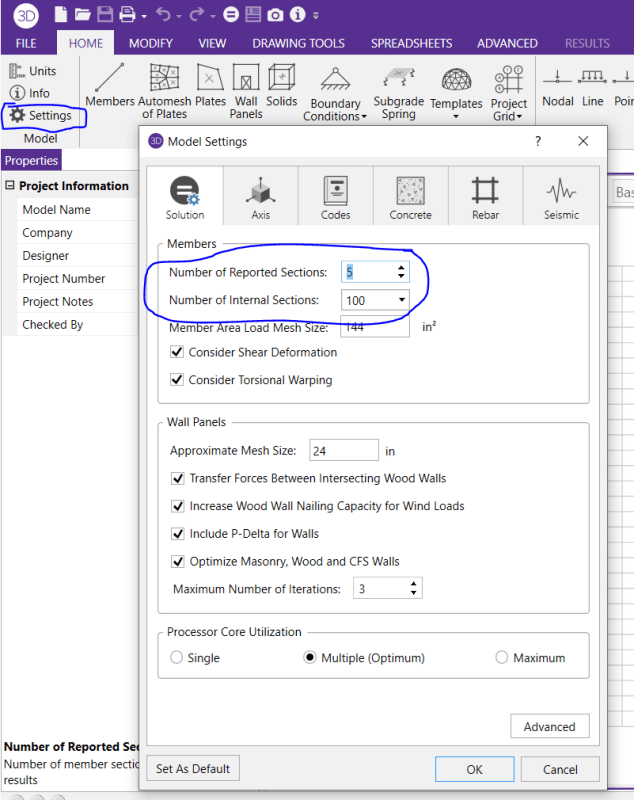IDS said:
I am not a RISA user, but surely it should report the correct moment at supports, regardless of the number of subdivisions?
All the calculations and forces are correct. The issue is that the Member results reporting is only done at equally spaced sections (based on those two settings shown in my first post). So, the member force diagrams may miss the support location. Which is why breaking the long member into individual beams for each span is often the best solution.
If Roger and I still worked there, we would have fixed / enhanced this by now
![[wink] [wink] [wink]](/data/assets/smilies/wink.gif)
.... it was something that always bothered us. It just never got a high priority because the large amount of work / re-work that it would have caused without really driving any new sales. Without me and Roger, I suspect there isn't a champion in the office to address this.
Note:
Similar sort of thing for plate stress / force results. If you make a simply supported slab out of plate elements in RISA vs SAP you'll see that the SAP element contours get the contouring correct all the way into the supports..... RISA will shown basically the same contours until you get within a plate or two of the support. There just isn't a boundary correction in contouring for RISA. Not really a big deal and I don't think we got very many user comments about it. But, when I realized SAP was doing a better job than RISA, I wrote up an enhancement ticket with Christine (the smartest PhD developer RISA had) to "enhance" those contours. I actually just found out that Christine isn't there. So, without me or Christine (or a sales motivation) I don't expect this to change.
Caveat:
I worked for RISA for 16 years under the original owner (Bruce Bates). When Bruce sold the company to Numschek, I left under less than cordial circumstances. Now I work for the company that writes SAP2000. So, I have bias here. Especially when it comes to making comparisons between SAP and RISA (as I have done in this post).


![[wink] [wink] [wink]](/data/assets/smilies/wink.gif) .... it was something that always bothered us. It just never got a high priority because the large amount of work / re-work that it would have caused without really driving any new sales. Without me and Roger, I suspect there isn't a champion in the office to address this.
.... it was something that always bothered us. It just never got a high priority because the large amount of work / re-work that it would have caused without really driving any new sales. Without me and Roger, I suspect there isn't a champion in the office to address this.